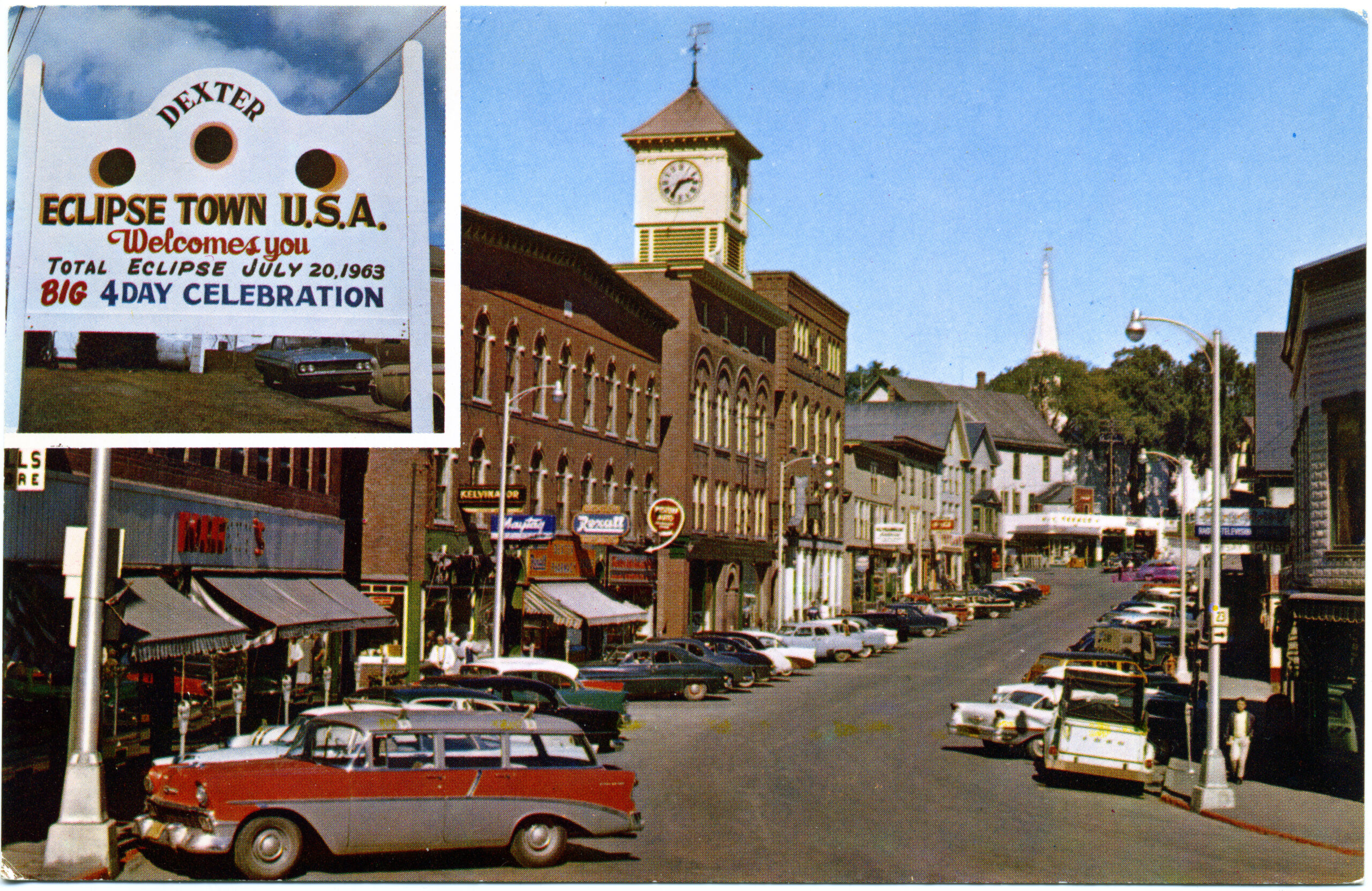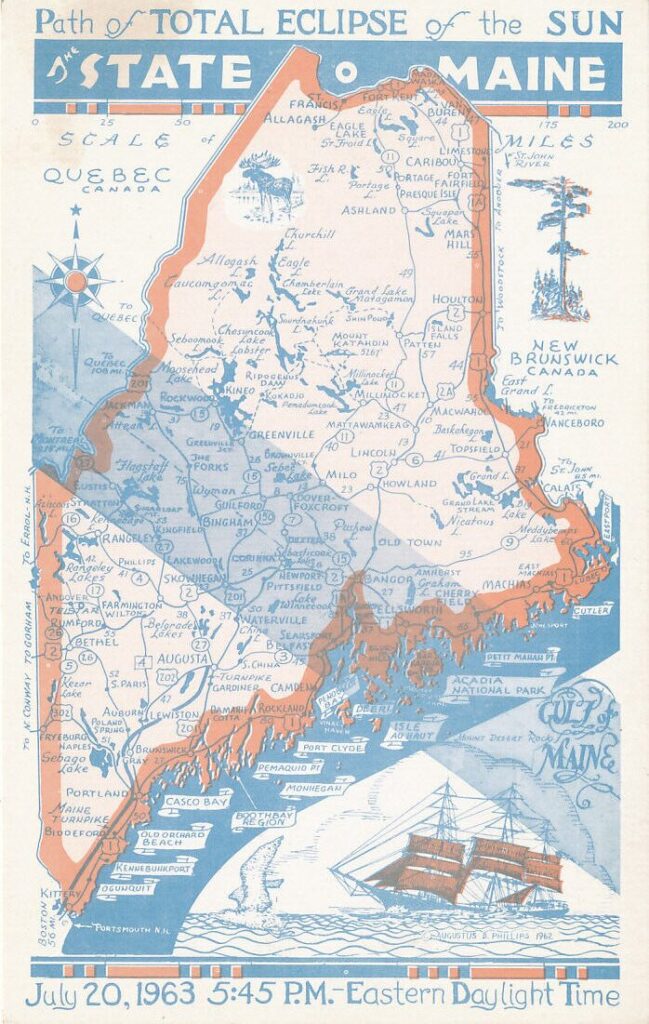
Jon McLaughlin remembers making a pinhole camera out of milk cartons and mirrors for the 1963 total solar eclipse that passed through only two American states, Alaska and Maine.
“I remember I was in grade school. Can’t remember what grade. I would have been 8,” said McLaughlin, the executive director of the Houlton High School Alumni Association and former director of the Southern Aroostook Development Corp. “There was a pinprick of a hole on the box and the image went into the box and reflected off the mirror onto the wall of the box or something like that. The biggest thing I remember is when totality came, the quietness and the birds going to roost.”
At the time, news accounts reported the next total eclipse in Maine would be in Aroostook County in another 200 years. While off by nearly 140 years, the prediction’s location was spot-on with the next total solar eclipse passing through the County on April 8, 2024. And much like in 1963, County towns along the path of totality are bracing for a predicted influx of thousands of scientists and eclipse chasers.
For the July 20, 1963, eclipse, the 55-mile wide path of totality ran right through Bangor and over to the coast. Planning started about two years ahead of time with initial projections at about 10,000 visitors. Over time those numbers grew with planners expecting about 250,000 to the state’s towns in the eclipse path, with 75,000 predicted for Bangor and 3,000 scientists were slated to complete studies at the University of Maine in Orono.

Cloudy weather did not stop the influx and while final attendance numbers varied, officials estimated state totals between 150,000 and 200,000, according to the Bangor Daily News. It was like adding a big city to the state along with an 8-pound, 3-ounce eclipse baby girl born at Westbrook Community Hospital and a couple married as the moon cast its shadow.
As a result, the Department of Economic Development reported a $10 million economic boost to the state from the eclipse, according to a Bangor Daily News story the following week.
Bangor Daily News reporter Bob Taylor was among a group of 75 scientists and media who experienced the cosmic rarity seven miles up in an American Airlines jet airliner.
“The sky is bluer than on the ground,” Taylor reported. “The last flicker of sunlight transformed the sky into a deepening color best described as purple but unlike any shade found on earth, then came the blanket of blackness.”
On the American Airlines flight with Taylor were scientists from Harvard and the Smithsonian Astrophysical Observatory as well as reporters and photographers from Life, Look, Time, Newsweek, Associated Press, United Press International, New York Times, Chicago Daily News, NBC television, international wire services and a French Magazine from Paris.
Additionally, Astronaut Scott Carpenter, along with NASA astronomer Jocelyn Gill, flew over Maine at 45,000 feet in a specially equipped DC-8 for a view of the cosmic event.
About 5,500 viewed the eclipse from Cadillac Mountain on Mount Desert Island. And as cars overflowed parking areas, they lined the mountain road nearly to the bottom, the Bangor Daily News reported.
A group of Harvard History of Science graduate students planned an expedition to view the 1963 eclipse from the top ridges of Mt. Katahdin.
The weather, like it does in Maine, kept everyone guessing with clouds and fog parting just in time for the eclipse in several towns including Caratunk, Newport and Pleasant Pond.
Bangor and Orono were not so lucky and the clouds covered the entire event for thousands, including all the scientists set-up for photos and other studies. Not to mention, thunderstorms occurred in Orono right after totality.
BDN staff photographer F. Norman Webb viewed the eclipse flying out of Old Town Airport at 16,000 feet and staff photographer Jack Loftus was able to see it from the newspaper’s observation tower, according to the paper’s eclipse briefs.
Nearly 1,000 people packed the shores of Pleasant Pond in Somerset County and others who saw the clouds, hopped into cars, racing to cloudless locations.
The Kitt Peak National Observatory in Tucson, Arizona picked Dexter as a good viewing location because it was in the center of the area of total eclipse. There were 15 large groups slated for the event in the small town and because of limited accommodations the Dexter Development Association helped get people into local homes and Dexter Fish & Game Association set up about 200 camping spaces for visitors, according to a 1963 article in DownEast Magazine.
Similarly, Aroostook County small towns like Houlton, where locals are preparing for nearly 40,000 in 2024, are finding ways to juggle limited accommodations through residents and campgrounds. .

A big change since 1963 is viewing advice. At the time, most news accounts told people that it was fine to view the eclipse through very dark glasses or two pieces of silver film. This is not accurate and looking at the eclipse this way can permanently damage the retina with solar burns.
McLaughlin’s pinhole camera is still an excellent option according to scientists as are approved and certified eclipse viewing glasses.







